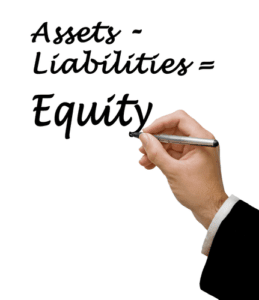Manufacturing Accounts

The subledger and subledger type for a general ledger account work together to provide detailed accounting to the Account Master table (F0901). The subledger numbers become the audit trail for the posted subledger transactions. Use a subsidiary account https://www.bookstime.com/ when you need more detailed accounting activity for an object account. To determine a company’s net worth, you must review the results at the end of the previous fiscal period and then take into account changes that have occurred during the year.
Job Shop Manufacturing
- This will help to identify opportunities to improve efficiencies companywide, drive revenue and increase profit.
- Your manufacturing business is as creative and unique as you are, so it goes without saying your accounting software should be too.
- Inventory valuation is about keeping track of the cost of materials, work in process, and finished goods, an essential process in both discrete and process manufacturing.
- Just like a chef needs to know the price of ingredients, including the cost of raw materials, to make a delicious and profitable meal, manufacturing companies need to be smart about their spending.
- Outsourcing rapid prototyping to service bureaus is recommended when you require just a few parts occasionally, and for parts that are large or call for non-standard materials.
- It is commonly termed as factory overheads and is incurred in running the operation of the factory.
Under just-in-time, Toyota strives to eliminate «waste, inconsistencies, and unreasonable requirements on the production line.» Companies may choose to continually improve their processes; instead of returning back to prototype stages, they often review and implement smaller changes during the actual manufacturing step. Before any tangible good is made, manufacturing begins with concept development and the growth of the product vision. This product vision defines the product, who the target audience is, what the need for the good is, and what competitors exist. Many of these types of questions may define the good and help refine what characteristics will go into the actual product.
Manufacturing Versus Merchandising Income Statements
Technology and global trends are always changing – and so must a manufacturing business if it wishes to stay agile. By the time you finish upgrading your systems, the world may have evolved to make them obsolete. The solution is to build a custom tech stack out of multiple smaller, cheaper, cloud-based systems that integrate to create a synchronised flow of data between each area of your business. Fixed labour costs could include contractors, technicians, and maintenance staff with set jobs to do with set fees.
Benefits of Implementing Manufacturing Accounting Systems

Often, these critical core functions are developed and tested in separate sub-units before being integrated into a single product prototype. This subsystem approach isolates variables, making it easier for teams to split up responsibilities and ensure reliability on a more granular level before folding all of the elements manufacturing accounting together. They provide unmatched turnaround time to convert a computer file into a physical prototype, allowing designers to quickly test additional concepts. In contrast with the majority of workshop and manufacturing tools, desktop 3D printers are office-friendly, sparing the need for a dedicated space.
- In this guide we’ll walk you through the financial statements every small business owner should understand and explain the accounting formulas you should know.
- Using the cost flow equation, you can see how failing to record the $9,000,000 loss would understate cost of goods sold.
- This will be an accumulation of the money you have spent on direct materials, direct labor costs, and manufacturing overheads on each work-in-process item in your inventory.
- Diving camera manufacturer Paralenz used 3D printing to create functional prototypes that endured testing 200+ meters below sea level.

Ultimately, the rapid prototyping process helps companies get better products to market faster than their competition. It provides almost unlimited form freedom, doesn’t require tooling, and can produce parts with mechanical properties closely matching various materials made with traditional manufacturing methods. Each cost account is closed and the balances transferred to the manufacturing account.
- Employing job costing enables businesses to assign costs to each production run or batch of products, facilitating a comprehensive tracking of expenditures specific to each job.
- A key consideration here for manufacturers is how labor costs are tracked for manufacturing accounting, especially where to draw the line between direct labor costs and overhead labor costs.
- In addition, the company risks losing the benefits of MTO and MTS by trying to balance each type of process.
- Manufacturing accounting is a group of inventory and production management processes used for monitoring and controlling the costs involved with manufacturing products.
- Implementing manufacturing accounting systems, especially those designed for discrete manufacturing, is like automating the ship’s course, allowing for a more efficient journey.
Implement Real-Time Inventory Tracking
The weighted average is generally the least common cost flow assumption for manufacturers. In fact, the IRS previously dismissed this method as inaccurate, only allowing businesses to use it for tax purposes in 2008. It involves calculating the weighted average cost of all units available for sale during a given period.
Capable inventory management and MRP software systems also automatically compile manufacturing accounting data into readily usable reports. It is therefore mostly an internal business management process aimed at better decision-making on budgeting, cost control, constraint and margin analysis, etc. Accountants use several methods to determine the number of partially completed units in WIP. In most cases, accountants consider the percentage of total raw material, labor, and overhead costs that have been incurred to determine the number of partially completed units in WIP.
Implement automated inventory management
Manufacturing supplies, wages for non-production staff, and overheads like fuel or electricity can also all be considered direct costs. With proper inventory management, you can ensure a steady supply of materials while keeping expenses under control. The software should have the ability to generate financial reports and provide insightful analysis of production performance. Process costing is beneficial for saving time as calculating costs need not to be completed for each individual unit. The downside is that the costs per unit can become inaccurate since rounding up costs per process can introduce discrepancies.
